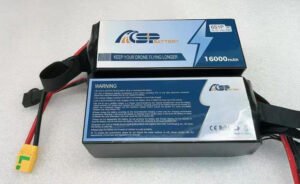Introduction
It is critical to ensure proper Drone Battery maintenance for longevity in service. Unlike the many batteries strewn around our homes, drone batteries are Lithium-ion batteries with their own set of rules. This is for maximizing the drone battery performance while keeping safe.
The following are a few guidelines for properly caring for your drone batteries, which will extend their life.
Updating Your Drone Battery’s Firmware during Drone Battery maintenance
This is an obvious step for the plane itself. However, it's also critical to perform this procedure on all of your fleet's batteries. If the batteries in many drones aren't all on the same firmware, they won't fly off at all.
What should I do if my drone's battery isn't working properly? How would one upgrade their batteries to the most recent firmware? Check if a battery firmware update is included in the current drone software. Then accept it and run the update with one set of batteries.
If you have outdated drone batteries, your drone's flight software will typically notify you with an odd firmware message. This comes along with a request to update the battery. Fortunately, many drone producers follow this method for updating firmware. Therefore, drone battery maintenance becomes simple to maintain all of your batteries up to date.
Use The Manufacturer's Drone Battery Chargers
Third-party charging solutions are available for a number of different drone models. Although these appear to be quite popular. Especially due to their low-cost pricing, manufacturer-specific fees are designed to operate with only that company's drone batteries.
When you think about it, using a third-party charger is something to be concerned about. The following should be considered:
- The battery-charging rate of the drone charger may be greater than that of the batteries.
- The third-party drone battery charger may charge the batteries more rapidly. But this faster rate of charge might cause high internal temperatures. This can damage your battery components and lead to shorter battery life.
- A third-party drone battery charger may not have any instructions or alignment with the battery, which might cause the batteries' terminals to be damaged.
- Third-party batteries have a higher risk of failure, as they are not designed or built by the manufacturer. While some drone battery chargers include protections in their systems and batteries, the third-party charger may not.
Follow the drone battery charging best practices
Before charging, batteries should be allowed to return to the manufacturer's recommended internal temperature. If the batteries have been kept in a hot car or a freezer, they should be returned to approximately room temperature before charging.
Also, wait at least 20 minutes after a flight before putting it on the charger. However, as we all know, it's sometimes critical to get our batteries recharged as soon as possible following only a flight's use. It is safe to connect a battery to some manufacturer chargers even if it is still hot, provided the charger and battery are in a well-ventilated area.
However, the battery will usually defer charging (while on the charger) until the internal temperature has cooled down to a safe level. All said, it is still strongly suggested that you let the battery cool down before putting it on the charger.
Follow Drone Battery maintenance storage best practices
Storage Of Drone Batteries
Most drone batteries should be stored between 71 and 86 degrees Fahrenheit (22 and 30 degrees Celsius). Minimizing battery capacity loss by storing between these temperatures is beneficial.
While it is suggested that batteries be kept at these temperatures, this may not always be feasible. If this is the case, avoid storing batteries in automobiles or storage units that will get excessively hot or cold to prevent harm to the batteries.
Partially Discharge Drone Batteries Before You Store Them
Although we all desire to be in a "ready state" or an "immediate Go state," you should not charge batteries to 100 percent before storage, hoping to be prepared "just in case." Many battery producers make use of intelligent technology, which means that after a set period of time, the batteries will automatically discharge. Batteries with self-discharge capabilities or those kept with a full charge for an extended period of time will harm the cell membranes.
The battery's self-discharge rate can also be adjusted in the drone's operating software (in DJI drones, this would be 60 days). If there is no option for you to set the days yourself, the battery should start self-consuming after 10 days. If you want to store a battery and it is less than 60 percent charged, it should first be recharged to 60%.
Rotate Drone Batteries Usage
To some, this may appear to be a strange practice. However, the use of batteries' rotation out helps to improve their health and longevity. Let's assume you have three "fly-more" packages with three batteries each. Label the three batteries (1, 2, 3) and utilize them in that order.
If you aren't going to fly all of the batteries in one session, you'll put the next one in line and work your way back down. This Drone Battery maintenance strategy avoids utilizing one battery incorrectly multiple times over time, which can extend each battery's life by preventing wasting electricity on cells that are no longer active or need replacement.
Conclusion
To conclude, by following the above steps, you will not only ensure proper Drone Battery maintenance but also increase the lifespan of your drone batteries. Get the most out of your purchase by using and storing them correctly!


